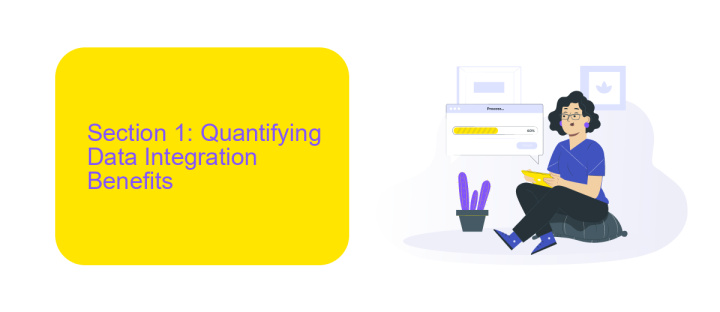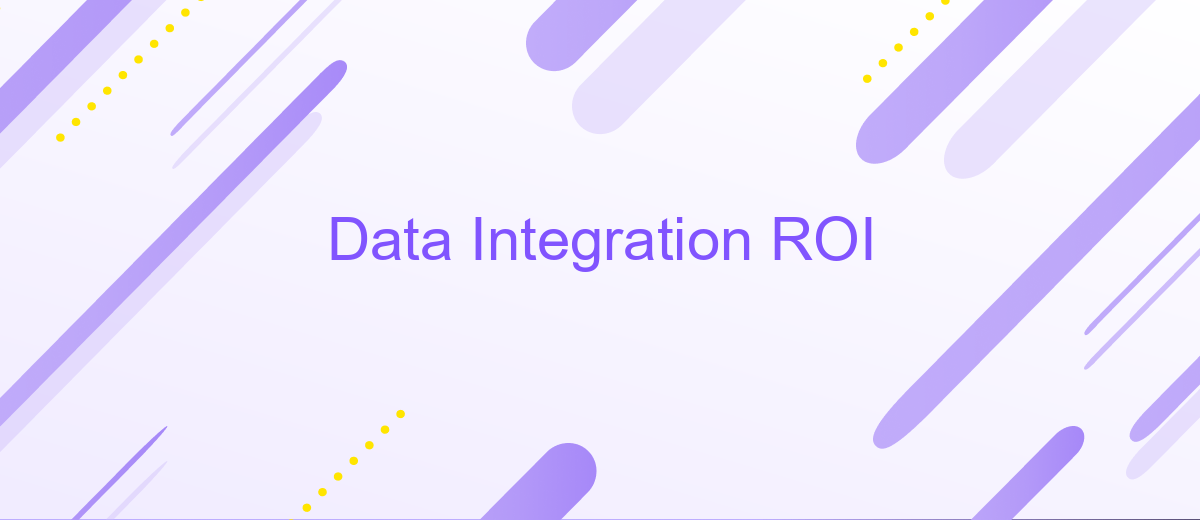Data Integration ROI
Data integration is a critical component for modern businesses aiming to leverage their data effectively. By seamlessly combining information from various sources, organizations can gain valuable insights, enhance decision-making, and optimize operations. This article explores the return on investment (ROI) of data integration, highlighting the tangible benefits and strategic advantages that can be achieved through effective data management and integration practices.
Introduction: The Business Case for Data Integration
In today's data-driven world, businesses are increasingly recognizing the importance of data integration. By seamlessly connecting various data sources, organizations can gain a comprehensive view of their operations, leading to more informed decision-making and enhanced efficiency. Implementing a robust data integration strategy not only streamlines processes but also drives significant return on investment (ROI).
- Improved data accuracy and consistency
- Enhanced decision-making capabilities
- Increased operational efficiency
- Cost savings through automation
- Better customer insights and personalization
One effective way to achieve seamless data integration is by utilizing services like ApiX-Drive. This platform simplifies the process of connecting disparate systems, enabling businesses to automate workflows without the need for extensive coding. By leveraging such tools, companies can ensure that their data is accurate, up-to-date, and readily accessible, ultimately driving better business outcomes and maximizing ROI.
Section 1: Quantifying Data Integration Benefits

Quantifying the benefits of data integration involves assessing both tangible and intangible gains. Tangible benefits include cost savings, increased efficiency, and improved accuracy. For instance, by automating data flows between systems, businesses can reduce the time employees spend on manual data entry, thereby cutting labor costs. Additionally, integrated data systems can enhance decision-making processes by providing real-time data access, which leads to better strategic planning and faster response times to market changes.
Intangible benefits, while harder to quantify, are equally important. These include improved customer satisfaction due to more personalized and timely interactions, and enhanced data security through centralized data management. Tools like ApiX-Drive facilitate seamless data integration by allowing businesses to connect various applications without the need for extensive coding. This not only speeds up the integration process but also ensures that data is consistently accurate and up-to-date across all platforms, further amplifying the return on investment (ROI) from data integration efforts.
Section 2: Measuring ROI: Return on Investment

Measuring the ROI (Return on Investment) of data integration initiatives is crucial for understanding the value they bring to an organization. It involves analyzing both tangible and intangible benefits that result from integrating disparate data sources.
- Cost Savings: Evaluate the reduction in manual data entry, errors, and redundancies.
- Efficiency Gains: Measure the time saved through automated processes and improved data accessibility.
- Revenue Growth: Assess the impact of better data insights on sales, marketing, and customer service.
- Scalability: Consider the ability to scale operations without proportional increases in cost.
Utilizing services like ApiX-Drive can simplify the integration process, making it easier to connect various data sources without extensive coding. This not only reduces the implementation time but also ensures that the data flows seamlessly, thereby maximizing the ROI. By focusing on these key metrics, organizations can make informed decisions and justify their investments in data integration technologies.
Section 3: Case Studies and Success Stories

Successful data integration projects can significantly boost an organization's efficiency and profitability. One compelling example is a retail company that integrated its e-commerce platform with its CRM system. By leveraging data integration, they achieved real-time synchronization of customer data, leading to personalized marketing and increased sales.
Another notable case is a healthcare provider that used data integration to connect patient records across multiple systems. This integration not only improved patient care by providing a holistic view of medical history but also streamlined administrative processes, reducing operational costs.
- A financial institution reduced transaction processing time by integrating its various banking systems.
- A manufacturing firm improved supply chain management through seamless data flow between suppliers and internal systems.
- An educational institution enhanced student experience by integrating learning management systems with administrative databases.
Tools like ApiX-Drive make these integrations more accessible by providing user-friendly interfaces and automation capabilities. Organizations leveraging such tools can quickly set up and manage integrations, ensuring data consistency and unlocking new opportunities for growth.


Section 4: Conclusion: Unlocking the Power of Integrated Data
In conclusion, the power of integrated data cannot be overstated. By unifying disparate data sources, businesses can unlock valuable insights that drive strategic decision-making and operational efficiency. The return on investment (ROI) from data integration is evident in enhanced analytics, improved customer experiences, and streamlined processes. As organizations continue to recognize the importance of data integration, leveraging advanced tools and services becomes crucial.
One such service that simplifies the integration process is ApiX-Drive. With its user-friendly interface and robust capabilities, ApiX-Drive enables seamless data connectivity across various platforms. This not only reduces the complexity and cost associated with manual integrations but also ensures real-time data accuracy. By adopting solutions like ApiX-Drive, businesses can maximize their data integration ROI, paving the way for innovation and growth in an increasingly data-driven world.
FAQ
What is Data Integration ROI?
How can I calculate the ROI of data integration?
What are the main benefits of data integration?
How long does it take to see ROI from data integration?
What tools can help in achieving a positive ROI in data integration?
Routine tasks take a lot of time from employees? Do they burn out, do not have enough working day for the main duties and important things? Do you understand that the only way out of this situation in modern realities is automation? Try Apix-Drive for free and make sure that the online connector in 5 minutes of setting up integration will remove a significant part of the routine from your life and free up time for you and your employees.

